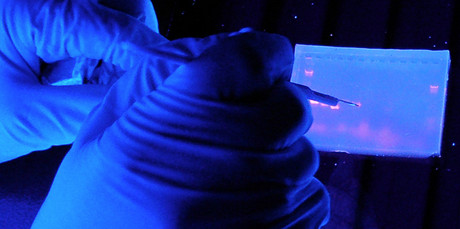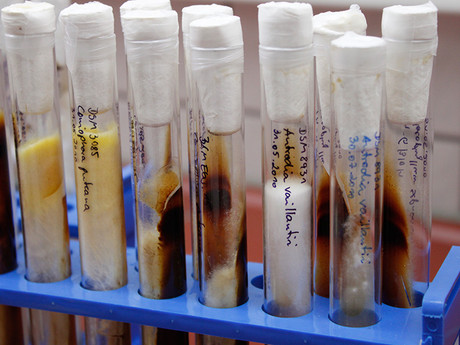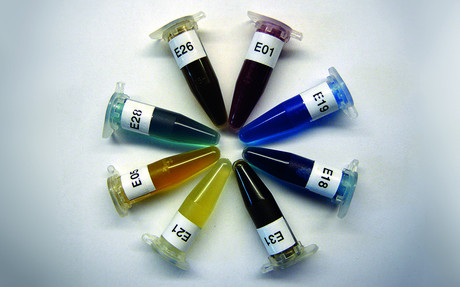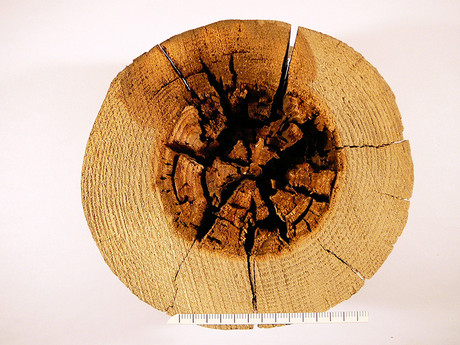Biology
The area biology at the IHD comprises the areas of mycology and molecular biology as well as wood science/wood anatomy, wood protection and wood modification.
Technical-organisational subdivisions are the Mykolabor Dresden with research and development activities on microbiology/mycology and molecular biology, the Wood Anatomy Laboratory and the Wood Drying/Wood Modification Technical Centre.
- Molecular diagnostics and bioinformatics
- Microbiology, mycology, biotechnology
- Material protection against fungi, bacteria and algae
- Wood anatomy and wood knowledge
- Wood protection and wood modification
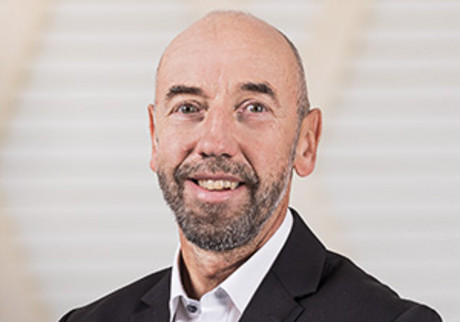
Dr. rer. silv.
Wolfram Scheiding
Head of Departement · Wood preservation · Wood modification (TMT) · Building biology · Insulation materials
Molecular diagnostics and bioinformatics
Microbiology, mycology, biotechnology
- Diagnostics of microorganisms (e.g. by cultivation, microscopy)
- Building biology, indoor hygiene
- Investigations on mould
- Further development of biological test methods
- Biotechnical modification of materials
- Production and application of enzymes
- Mushroom cultivation (edible and medicinal mushrooms)
- Development of substrates for plants and cultivated fungi
- Development of fungus-based materials
Wood anatomy and wood knowledge
- Macro- and microscopic examinations on wood anatomy
- Characterisation of wood features and wood properties
- Deduction of structure-property relationships
- Microscopic examinations of interfaces (e.g. coatings, glue lines)
- Wood species identification (leaflet)
- Wood species identification at wood-based panels (Video)
Wood protection and wood modification
- Development and optimisation of materials and measures for wood and material protection
- Development and adaptation of methods for testing and diagnostics
- Further development off thermal wood modification
- standardisation work within DIN and CEN comittees "Durability of Wood and wood products"
- Collaboration in specialist committees and associations of wood protection
- Participation in teaching and expert training
This is complemented by the services of the Entwicklungs- und Prueflabor Holztechnologie GmbH (EPH), e.g. determining the durability or effectiveness of biocides and the certification programme "Quality Mark TMT".
Services Biology
Biology
- Determination of harmful organisms (wood-destroying and discolouring fungi, moulds, bacteria, algae, insects)
- Molecular biological fungal diagnostics (detection of dry rot fungi, yes/no test dry rot Serpula lacrymans, DNA sequencing)
- Hygienic or building biology assessment of materials and interiors, mould testing
- Biological testing (effectiveness of biocides, material resistance, airborne germ collection) is offered by the accredited Biological Testing Laboratory
Wood science
- Wood science investigations
- Determination of wood species
- Determination and evaluation of wood properties and wood qualities
- Measurement of layer thicknesses and microscopic structures
Wood preservation and material protection
- Damage analyses, wood preservation reports
- Success control after control measures (sanitation, mould remediation)
- Kiln drying and thermal modification
- Humidity-regulated warm air procedure for the control of animal wood destroyers according to WTA 1-1 (disinfestation, stationary chamber)
- Advice on protection, control and remediation measures
- Training in the field of wood science and wood protection
- Information dissemination (TMT leaflets, Technical statement on the use of propiconazole in wood preservatives)
- Certification programme "Quality Mark TMT"
Technical equipment
- Mycological laboratory
- Biomolecular laboratory (DNA extraktion robot), PCR/qPCR cycler, gel electrophoresis, array scanner)
- Culture collection of microorganisms
- Device for airborne germ sampling
- Facilities for field tests in use classes 3 and 4
- Reflected light microscopes up to 400x, transmitted light microscopes up to 1000x
- Xylotheque with over 2000 wood species
- Grinding and polishing equipment for embedding preparations
- Devices for inspection of constructions (endoscope, drilling resistance measurement)
- Kiln dryer (2100 mm useful length)
- Thermokiln (0.75 m³, 1200 mm useful length)

